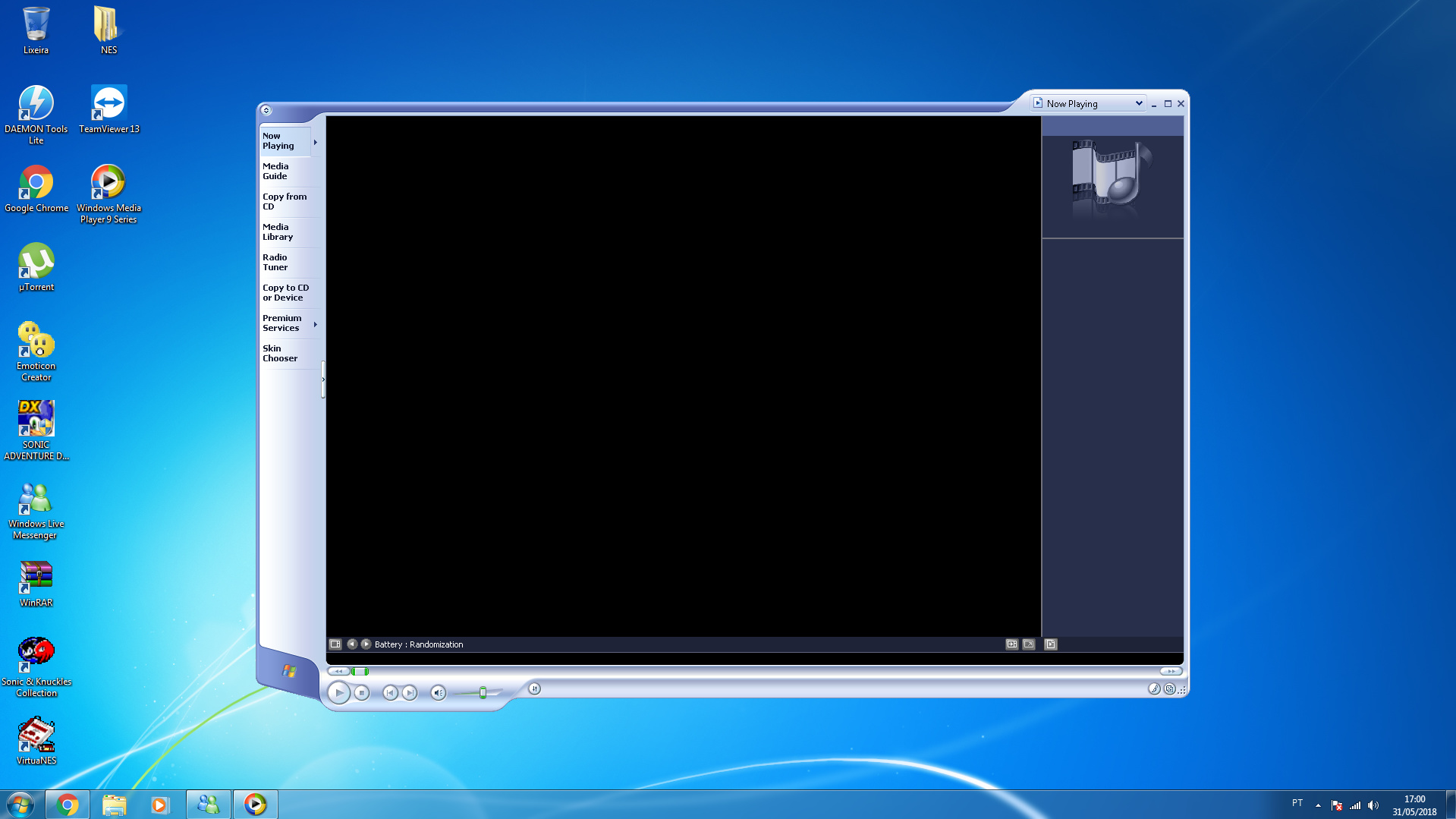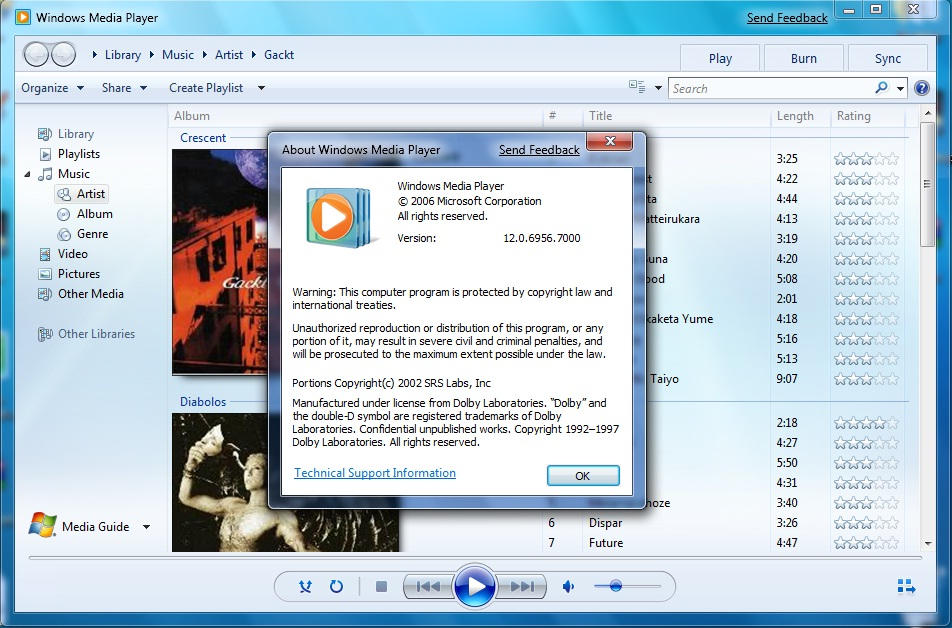Meets ASTM C1136, Type IV
WMP-VRR is the most commonly installed insulation facing in metal buildings. The front side is composed of a polypropylene insulation facing, with a metallized polyester (foil like) backing on back side. WMP-VRR Plus provides a higher permeability than WMP-VR. It is generally used in a typical metal building that does not require heavy facing.
Windows Media Player (WMP) is a media player and media library application developed by Microsoft that is used for playing audio, video and viewing images on personal computers running the Microsoft Windows operating system, as well as on Pocket PC and Windows Mobile-based devices.Editions of Windows Media Player were also released for classic Mac OS, Mac OS X and Solaris but development. Windows Media Player 12 is the default media player available for Windows 10, Windows 8 and Windows 7. Version 12 has been enriched with additional features from the previous versions including a simplified interface and an improved play mode. Windows Media Player also allows users to watch movies and listen to audio recordings. The list consists of major players in the industry such as Internet Explorer, Firefox, Chrome or Opera and Windows Media Player, Winamp, VLC media player, foobar2000, GOM Player, BS.Player or iTunes.
| FACING COMPOSITION | DESCRIPTION | VALUES (ENGLISH) | VALUES (Metric) |
|---|---|---|---|
| White Film | Polypropylene | 12.5 lbs / 3000 ft2 | 20 g / m2 |
| Adhesive | Flame Resistant | ||
| Reinforcing | Tri-directional Fiberglass/Polyester | 5 / inch (MD) 4 / inch (XD) | 20/ 100mm (MD) 16/ 100mm (XD) |
| Kraft | Natural | 11 lbs / 3000 ft2 | 18 g / m2 |
| PHYSICAL PROPERTIES | TEST METHOD | VALUES (ENGLISH) | VALUES (Metric) |
|---|---|---|---|
| Basis Weight | Scale | 17lbs / 1000 ft2 | 83 g/ m2 |
| Permeance (WVTR) | ASTM E96 Procedure A | 0.09 perm (grains/hr.ft2.in Hg) | 5.17 ng / N.s |
| Bursting Strength | ASTM D774 | 60 psi | 4.2 kg / cm2 |
| Puncture Resistance | ASTM C1136 | 125 beach units | 3.7 Joules |
| Tensile Strength | ASTM C1136 | 40 lbs/inch width (MD) 30 lbs/inch width (XD) | 7.0 kn / m (MD) 5.3 kn / m (XD) |
| Caliper / Thickness | Micrometer | 0.008 inch | 203 micron |
| Accelerated Aging | 30 Days @ 95% RH, 120°F (49°C) | No Corrosion No Delamination | No Corrosion No Delamination |
| Low Temperature Resistance | ASTM D1790 -40°F (-40°C) | Remains Flexible No Delamination | Remains Flexible No Delamination |
| High Temperature Resistance | 4 hours @ 240°F (116°C) | Remains Flexible No Delamination | Remains Flexible No Delamination |
| Water Immersion | 24 hours @ 73°F (23°C) | No Delamination | No Delamination |
| Mold Resistance | ASTM C665 / C1338 | No Growth | No Growth |
| Dimensional Stability | ASTM D1204 | 0.25% | 0.25% |
| Light Reflectance | ASTM C523 | 85% | 85% |
| Fire Testing | ASTM E84 / UL 723 | CAN ULC-S102M | BS 476 | ||
|---|---|---|---|---|---|
| Film Side | Kraft Side | Film Side | Kraft Side | ||
| Flame Spread | 10 | 15 | 15 | 15 | Class 0 Surface |
| Smoke Developed | 10 | 5 | 30 | 45 | |
Physical Properties based upon statistical averages, Weight / Thickness +/- 10%
CWPC Contingency Wartime Planning Course

War and Mobilization Plan (WMP)
IP-4050
INSTRUCTOR: Lt Col Bob Barthelmess
DESCRIPTION:This lesson presents an overview of the USAF War and Mobilization Plan (WMP), and how it relates to deliberate planning.
OBJECTIVE: TOOTLIFEST to comprehend the role the WMP plays in deliberate planning, and how the WMP provides Air Force planners the necessary policies, forces, planning factors, and data, required to support the CINC’s war plans.

SAMPLES OF BEHAVIOR: Each student will:
1. Describe how the WMP relates to the JSPS and JSCP.
2. Define the WMP
3. Describe the type of planning guidance in each volume
4. Describe how force packages (UTCs) are apportioned in deliberate planning
REQUIRED READING: None
OPTIONAL READING:
1. Read AFMAN 10-401, Operational Plan and Concept Plan Development and Implementation, pages 17-19, paragraph 1.10, 'USAF War and Mobilization Plan (WMP).'
2. Review the CWPC Desktop Reference for definitions of the following:
a. Allocation
b. Apportion
c. Assign
d. COMPES
e. Concept Plan (CONPLAN)
f. Mission Capability (MISCAP) Statement
g. Operations Plan (OPLAN)
h. Unit Type Code
i. War and Mobilization Plan (WMP)
j. Wartime Aircraft Activity (WAA)
TOPICAL OUTLINE
1. How the WMP relates to the JSPS and JSCP: The USAF War and Mobilization Plan (WMP) is an Air Force document that has its roots in the Joint community. As such, it is closely related to the Joint Strategic Planning System, specifically one of that system’s products, the Joint Strategic Capabilities Plan. As pointed out in an associated lesson plan (IP-4000), the JSCP provides guidance to the CINCs and Services on how to do planning, what plans are to be accomplished, and what notional forces will be apportioned. Each Service takes this Joint guidance and information and provides Service-unique policies and guidance. Thus, as the Joint planning community changes, so does the Air Force planning community. The diagram below shows the pictorial relationship among the JSPS, JSCP, JOPES, and the WMP.
2. War and Mobilization Definition: The WMP is a multi-volume Air Force document that provides Air Staff and USAF commanders with current policies, forces, and planning factors for conducting and supporting wartime operations. Planning data will also be available in electronic data files as part of the WMP System. The program is nearly complete, making the entire WMP available over the SIPRNET. This will negate the need for printed copies of the WMP.
3. WMP Volumes:
a. Volumes 1, 3, and 5 provide planning policy/guidance, forces, and planning factors/data, respectively, to assist the Air Force planner in developing supporting OPLANs, CONPLANs, or Functional Plans.
(1) Volume 1 - Basic Plan and Support Annexes (WMP-1)
(2) Volume 3 - Combat and Support Forces (WMP-3)
(3) Volume 5 - Basic Planning Factors and Data (WMP-5)
b. Volumes 2 and 4 are products of plans; and, while produced and managed by the Air Staff, are usually maintained or developed at the MAJCOM and/or air component command level.
(1) Volume 2 - Plans Listing and Summary (WMP-2)
(2) Volume 4 - Wartime Aircraft Activity (WMP-4)
4. WMP Volume 1 - Basic Plan and Supporting Annexes (WMP-1)
a. Provides Air Force planners a consolidated reference for general policies and guidance for the development of war plans and the support of combat forces during wartime.
(1) The basic plan portion of WMP-1 addresses the general situation, mission, concept of operations, and execution tasks for Air Forces in regional conflicts. It, in many ways, reflects the planning policies and guidance found in the JSCP, but brought into the Air Force planning environment. It is the starting point for Air Force planning.
(2) The functional annexes provide more detailed Air Force planning guidance for some 36 functional areas. Each annex provides specific functional policies, guidance, and near-term support forces to aid Air Force planners in developing war and contingency plans.
5. WMP Volume 3 - Combat and Support Forces (WMP-3)
a. The reference document for USAF forces planning.
b. Three parts: Combat Forces, Support Forces, and Unit Type Codes (UTCs).
(1) Part 1 - COMBAT FORCES - lists all available (i.e., JSCP apportioned) USAF combat forces by type aircraft, unit identification, unit availability date, and theaters for which they are apportioned.
(a) Translates JSCP apportioned notional forces into specific MDS/unit IDs. This process is formally done through a AF Beddown Conference.
1. The beddown conference takes the generic (or notional) apportionment for each CINC and determines which type of aircraft will meet the CINC’s requirements, along with which specific unit will fill that requirement. The process is shown below.
2. In the above example 12 fighter squadrons are apportioned to a CINC. The beddown conference takes this generic apportionment and determines (based on the theater, CINC requirement, etc) that the 12 fighter squadrons will be made up of 5 F-15 and 7 F-16 squadrons. Then, they’ll determine what specific units will fill that requirement.
(b) Resulting from the conference, the WMP 3-1 is developed. A sample is shown below
(2) Part 2 - SUPPORT FORCES - contains available support forces, listed by UTC, that are apportioned to each theater.
(a) A shopping list of available UTCs. Displayed in two ways: how many are apportioned to each theater, and how many are available in each AF MAJCOM.
- Managed closely by Air Staff and MAJCOM functional managers.
(3) Part 3 - UNIT TYPE CODES - a listing of all Air Force force packages (UTCs) approved for planning. WMP 3, Part 3, is in two sections. The first section is a product of COMPES’ MANFOR subsystem and lists each UTC and the associated total manpower required. Section two is a list of each AF UTC and its mission capability (MISCAP) statement as well as deployment characteristics.
(a) Listed alpha/numerically by UTC.
(b) Provides manpower/equipment data.
6. WMP Volume 5 - Planning Factors and Data (WMP-5):
a. Includes the only HQ USAF-approved wartime sortie rates, attrition rates, sortie duration, and crew ratio rates by MDS used for WRM planning.
b. Provides approved US Air Force wartime planning factors, (i.e., sortie rates and durations) from which the expenditure of many war consumables (e.g., fuel, oil, lubrication, chaff, flares, operational rations (MREs), etc.) can be estimated.
c. Used in conjunction with WMP-4 (WAA) data to provide the basis for planning and propositioning war reserve material (WRM).
7. WMP Volume 2 - Plans Listing and Summary (WMP-2): A three-part listing of Air Force plans that the JSCP has tasked the CINCs to prepare. These include deliberate plans that fall into the categories of Oplans, Conplans with or without TPFDD, and functional plans.
a. Parts 1 and 2 contain a consolidated listing of USAF and MAJCOM war and contingency plans.
- Part 3 contains Unified command plans for which the Air Force provides support.

8. WMP Volume 4 - Wartime Aircraft Activity (WAA) (WMP-4):Five-part document which reflects the most current MAJCOM planning, positioning, and employment activity of aviation forces tasked in support of OPLANs and CONPLANs with TPFDDs. Shows planning, positioning, and employment of programmed USAF aircraft by OPLAN/CONPLAN, base, MDS, and mission.
a. Accomplished by MAJCOM using either WMP-5 or command/OPLAN-unique planning factors and data
b. WMP-4 is currently maintained on the Global Command and Control System (GCCS) and is classified SECRET. Future requirements mandate WMP-4 be loaded on the GCCS, TOP SECRET (GCCS (T)), to support SIOP activity.
c. Provides base sortie activity using current JSCP/WMP snapshot. Used to identify WRM equipment needed to support aircraft/missile requirements and to develop base support plans.
d. Not intended to restrict use of aircraft for combat. The commanders (e.g., Wing Commander, CINC, etc.) can, obviously, conduct as many sorties as they desire; however, they must be aware that resources planned for were based on the data in the WAA.
e. Five parts:
(1) Parts 1 through 3: current year data and out-year aircraft activity summaries for each base
(2) Part 4: Missile Oriented Items Activity (MOIA) - identifies missile requirements by type and quantity in support of regional OPLANs.
(3) Part 5: Non-Aircraft Unit Related Rations Requirements - identifies MRE requirements in support of personnel at deployment and employment locations
Wmp Jan13 Chem5
f. Incorporates WMP - 5 planning factors
Hitachi Wmp 130

Hitachi Wmp 130gx
g. Maintained at MAJCOM, available to applicable bases